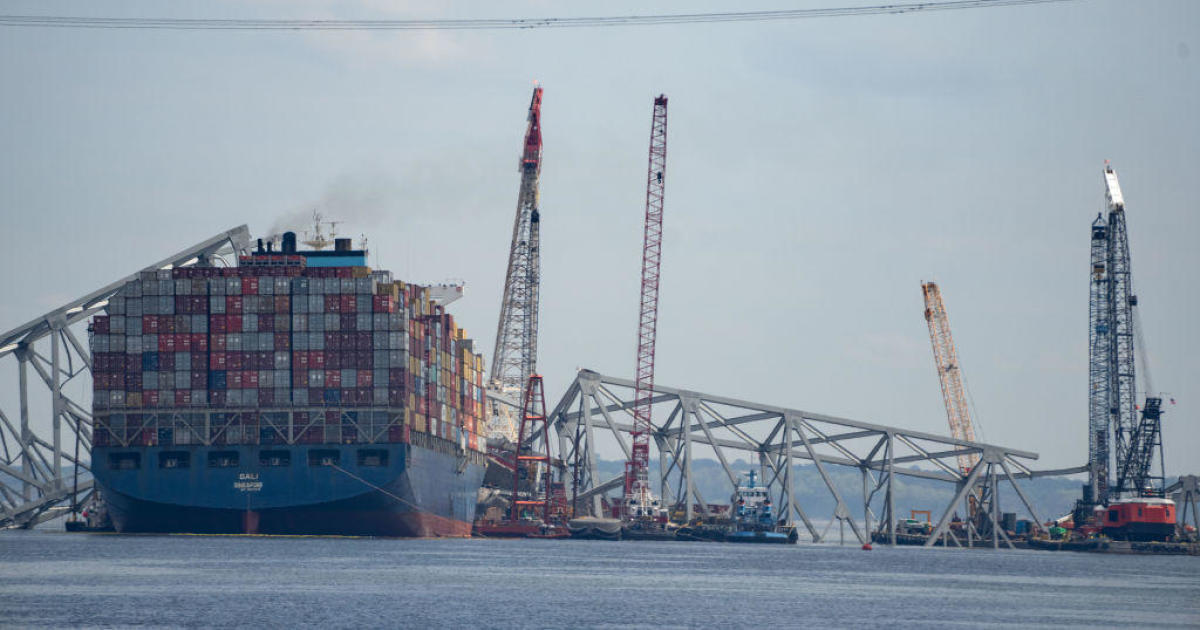Star-Spangled Banner Trail Follows War Of 1812
DENEEN L. BROWN
The Washington Post
BLADENSBURG, Md. (AP) -- In the summer of 1814 -- two years after Congress declared war against Great Britain -- the British moved rapidly up the Chesapeake Bay waterways, terrorizing port towns.
About midday on Aug. 24, British troops marched in sweltering heat on the town of Bladensburg, where they faced a "motely rabble" of three straggling lines of American militia, regular citizens, sailors and marines, who were no match for the British. Many of the American troops fled the battle, which became known as the "Bladensburg Races."
By that same evening the British had arrived in Washington, capturing the undefended city and burning the U.S. Capitol, setting a blaze so intense that it melted the skylights and many stone sculptures, including the marble statue of Liberty by Giuseppe Franzoni. The British also burned the White House, from which first lady Dolley Madison had hastily removed records, treasures and the now famous painting of George Washington. They set fire to the House of Representatives and the Library of Congress, before a torrential rain vanquished the flames. The British left the next day, leaving behind a swath of destruction.
"From downstream on the Potomac River, the people of Alexandria could see the flames," according to information from the Star-Spangled Banner Trail. "Within days, a British fleet appeared from the south to take -- or destroy -- the port of Alexandria."
Imagine following the same trail the British took in the War of 1812 -- a war some called the "Second War of Independence" -- which was fought between the United States and Britain from June 1812 to the spring of 1815 (although a peace treaty, the Treaty of Ghent, was signed in December 1814 in what is now Belgium, historians say fighting in the war continued because word was slow reaching some troops). Imagine stopping at the same ports and towns the British had once raided. Imagine virtually experiencing the drama of the war.
This month, state and local officials officially launched a Star-Spangled Summer in Maryland, cutting the ribbon on the Star-Spangled Banner National Historic Trail, a 560-mile land and water route that traces historic sites related to the War of 1812.
The Star-Spangled Banner Trail, which was established by Congress in 2008, gives visitors a chance to trace the war by connecting historic sites in Washington, Maryland and Virginia. The trail commemorates events leading up to the turning point Battle for Baltimore, which inspired Francis Scott Key to write the country's national anthem.
"Once they stood up to save the nation, the state was ours," Maryland Gov. Martin O'Malley, said during the ceremony at Bladensburg Waterfront Park.
Prince George's County Executive Rushern L. Baker III, who majored in early American history at Howard University, noted that President James Madison was present at the Battle of Bladensburg. "For the first time a sitting president rode into battle right here in Bladensburg," Baker said. "You think about the importance of Bladensburg in the War of 1812 and the number of presidents who were shaped coming out of this."
County officials are hoping to make Prince George's a destination for historic tourism. The number of tourists who visited Prince George's increased from 4.4 million in 2008 to 5.9 million in 2012, according to Tourism Economics, a company that tracks tourism. The county was the setting for many critical events in the War of 1812.
The "thematic" trail follows the action of the war along the Chesapeake Bay and waterways, including the Patuxent, Potomac and Anacostia rivers. "The trail commemorates the events over the years of the war," said Suzanne Copping, program manager for the Chesapeake Bay Office of the National Park Service. "You can follow any number of land routes and water routes."
Solomon's Island in Southern Maryland, Copping said, is a good place to start. Highlights there include:
Solomon's Island boardwalk -- Here visitors may look out on the Patuxent River where Americans fought naval battles with the British during the War of 1812. "The waterfront pretty much looks like it did 200 years ago," Copping said. "You can imagine what it might have been like with Navy Ships going up and down the Patuxent."
Jug Bay -- Visitors can continue their way up the Patuxent, stopping at Jug Bay, where Joshua Barney, who was warned about the British presence, famously uttered: "I am anxious to be at them." With a flotilla of gunboats and row barges, Barney battled the British, clashing at the Battle of St. Leonard's Creek.
"They fought back and forth with the British, and they chased each other like a cat and mouse up the Patuxent," Copping said.
Barney sailed his flotilla up the Patuxent. Following orders from the U.S. secretary of the Navy to avoid being captured, Barney destroyed his flotilla just east of Upper Marlboro near an area called Pig Point.
"As the barges exploded in the river, Barney's men hurried on foot to help defend Washington," a sign on the trail says. "Two days later, the capital was in flames."
Barney's flotilla is still at the bottom of the Patuxent, Copping said. Today, visitors along the Star Spangled Banner trail can rent kayaks and travel up the river, the same way the British and U.S. troops did, Copping said.
Highlights along the rest of the trail include: Fort McHenry National Monument and Historic Shrine in Baltimore; Promenade in Havre de Grace; the Kitty Knight House in Georgetown, Maryland, and Darnall's Chance in Upper Marlboro.
Over the summer, several weekend festivals celebrating the 200th anniversary of the War of 1812 and the major battles in Maryland, have been planned. These include:
-- June 21-June 22, an event is scheduled to mark the Battle of St. Leonard Creek in Leonardtown.
-- Aug. 23-24, festivals will commemorate the Battle of Bladensburg at Bladensburg Waterfront Park.
-- Aug. 30-31, events are planned to mark the Battle of Caulk's Field in Fairlee, Kent County, and "US Capital for the Day" is scheduled in Brookeville, in Montgomery County.
-- Sept. 6-8, celebrations are scheduled to mark the Battle of North Point.
-- Sept. 10-16, the Star-Spangled Spectacular, celebrating the 200th anniversary of the national anthem, is scheduled to take place in Baltimore.
(Copyright 2013 by The Associated Press. All Rights Reserved.)



